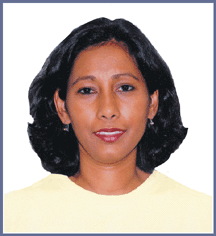 January 2013
January 2013OPENING POSITION
 January 2013
January 2013Trading was never simple to begin with, but considering how complex it has become, those early days when online trading was just introduced were a lot simpler in comparison. Nowadays, there is much more money flowing through the markets, but that money is chasing just a handful of trading vehicles each day. So it’s safe to assume that there are a lot more short-term speculators participating in the markets. This means erratic price movements are much more likely, which in turn leads to greater volatility. We’re seeing a lot of that in today’s markets, and while that means a different market for traders than before, for investors it means a difficult one. It makes me wonder if the traditional buy & hold models really apply in today’s markets at all.
With the advancements in technology, it is much easier for money to flow globally. We — and by that I mean individual traders — may not be aware of how much capital flows around the world on any given day, but the financial institutions know. The institutions drive the markets and they are lightning quick to adapt their trading models to the ever-changing market conditions. Compared to the simpler, smaller trading systems that individual traders create, institutional trading models are gargantuan. They are much more complex and made up of numerous components, all of which have an influence on the markets.
InThe Indomitable Investor by Steven M. Sears, the author mentions something that I would like to share with you. Sears states that trading models at financial institutions are developed like chains. These chains are linked together and each link could include bonds, stocks, commodities, and derivatives. If there is an unexpected movement in one link, it will cause the entire chain to ripple, and if the move is significant and severe, it could cause the chain to break, which in turn could lead to explosive price moves in the markets.
Trading was never simple, but there is much more uncertainty in the markets than there has ever been before, so the best thing you can do for yourself is to focus on minimizing your losses. Today’s trading environment is one in which you have to look at the short term. You need to develop trading systems that can withstand erratic price movements. Keep that in mind as we go into the new year.
Here’s wishing all our readers a happy and prosperous 2013!

Jayanthi Gopalakrishnan, Editor